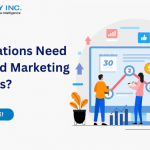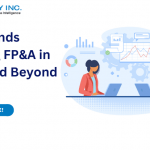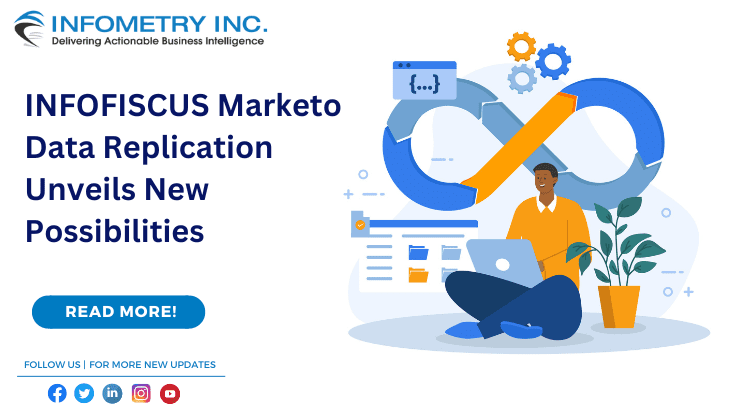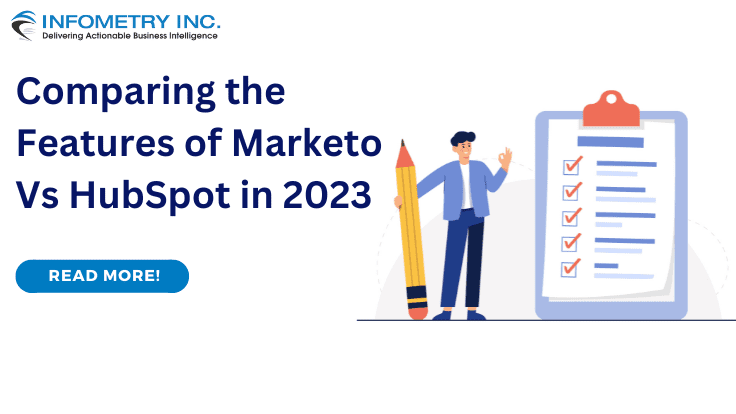
Why do Organizations Need Sales and Marketing Analytics?
May 2, 2023
Top Trends Shaping FP&A in 2023 and Beyond
May 4, 2023Any marketer who has or who is considering migrating from their marketing platform will know that migrating from one automation platform to another is not just a daunting task but involves more than a well-planned strategy. Even the slightest error can disrupt your automation framework and result in data loss, partial synchronization, or integration issues between platforms. These concerns can cause anxiety and sleepless nights for marketers who want to ensure a smooth and successful transition.
Therefore, if you’re considering migrating your current marketing automation to Marketo, it’s important to remember that the process can be challenging due to the large volume of data that grows daily and the need to keep up with it the various channels that customers use. However, Marketo is one of the top B2B marketing automation software options available, making the transition easier and simplifying the management of your marketing process. By choosing Marketo, you can engage with your clients more effectively and efficiently, as this platform is trusted by millions of businesses worldwide. If you’re feeling stunned by the prospect of selecting the appropriate marketing automation software for your company, exploring the features and benefits of Marketo may provide you with the confidence you need to make an informed decision.
Let’s First Know What is Marketo & Marketo Data Replication
Marketo is a cloud-based marketing automation software platform that helps organizations streamline their marketing processes and improve customer engagement. It offers a wide range of advanced features, such as lead scoring, nurturing, segmentation, and personalization, that help businesses to create and execute effective marketing campaigns.
Marketo data replication refers to copying data from Marketo to a separate database or warehouse. This is typically done to create a backup of your Marketo data or to integrate your Marketo data with other systems or applications. Marketo data replication can help businesses improve their reporting and analytics, create data backups to prevent data loss and integrate their Marketo data with other systems to gain deeper insights into customers and prospects.
Why Should You Consider Migrating to Marketo?
Advanced Marketing Automation Features
Marketo offers advanced marketing automation features such as lead scoring, nurturing, segmentation, and personalization. These features help you to target the right audience with the exact message at the right time, resulting in better lead quality and higher conversion rates.
Integration with Third-Party Applications
Marketo integrates seamlessly with other applications such as Salesforce, Microsoft Dynamics, and Google Analytics. This integration helps you to streamline your marketing processes and make better data-driven decisions.
Robust Reporting and Analytics
Marketo provides detailed reporting and analytics features that help you measure your marketing campaign’s effectiveness. This allows you to identify what works and doesn’t so that you can optimize your campaigns for better results.
Scalability
Marketo is a scalable platform that can grow with your business. As your business increases, you can add more features and functionality to your Marketo account to meet your evolving marketing needs.
Customer Support
Marketo provides excellent customer support to its users. Their support team is available 24/7 to answer your questions and help you resolve any issues you may encounter.
Overall, Marketo is a powerful marketing automation platform that can help you to streamline your marketing processes and achieve better results. If you are looking for an advanced marketing automation platform that offers integration with other applications, robust reporting and analytics features, and excellent customer support, then Marketo is worth considering.
Top 8 Steps to a Successful Marketo Platform Migration
Migrating your marketing automation platform from one system to another can be daunting. Marketo is a popular platform many businesses use for their marketing needs. If you are considering migrating to Marketo, there are specific steps you can take to ensure a successful transition.
Step 1: Assess your current marketing automation system
Before migrating to Marketo, you need to assess your existing system. Identify the functionalities you use the most, and evaluate the features you need in your new platform.
Step 2: Plan your migration strategy
Once you have evaluated your current system, creating a migration plan is time. Decide on the timeline for the migration, the team members who will be involved, and the resources you will need.
Step 3: Set up your new Marketo account
Sign up for a Marketo account and set it up to match your business needs. Make sure that the account is correctly configured before starting the migration process.
Step 4: Clean up your data
Data cleanliness is crucial for a successful migration. Clean up your data by removing duplicates, incomplete records, and irrelevant information. Also, make sure that your data is appropriately formatted for Marketo.
Step 5: Migrate your data
Once your data is clean and formatted, it’s time to start the migration process. There are different methods for migrating data to Marketo, such as using API, CSV import, or third-party tools. Select the strategy that works best for you.
Step 6: Test your new platform
After migrating your data, testing your new platform thoroughly is essential. Ensure all the features and functionalities work as expected, and your data is properly integrated.
Step 7: Train your team
As soon as your new platform is up and running, training your team on how to use it is essential. Ensure they are familiar with all the features and functionalities and understand how to optimize their marketing efforts using Marketo.
Step 8: Monitor your performance
After the migration, monitor your performance closely to ensure your marketing efforts are on track. Adjust as necessary to ensure you get the most out of your new Marketo platform.
By pursuing these steps, you can ensure a successful Marketo platform migration. Remember to take time, plan, and test thoroughly to ensure everything works correctly.
Things To Consider Before Migrating to Marketo
Migrating to Marketo can be a significant decision for any business, as it involves a lot of planning, time, and effort. Before making the move to Marketo, there are several key factors to consider:
Business Needs
It is essential to evaluate your current marketing automation software and determine what features and functionality are required for your business. This will help you to determine if Marketo is the right fit for your needs.
Budget
Migrating to Marketo can come with significant costs, including the cost of the platform itself, as well as implementation and training costs. Considering your budget and ensuring the investment is worthwhile is essential.
Data Quality
Before migrating to Marketo, it is essential to assess the quality and accuracy of your existing data. This will help ensure that your data is clean and ready for migration, saving time and reducing errors during the migration process.
Customization
Marketo offers a range of features and capabilities, but it may not meet your specific needs. It’s important to consider if you must customize the platform to fit your business requirements.
Resources
Migrating to Marketo requires time and resources, including project management, technical expertise, and training. You must ensure you’ve the necessary resources to support a successful migration.
By carefully considering these factors before migrating to Marketo, businesses can ensure a smooth transition and maximize the benefits of this powerful marketing automation software platform.
Benefits of INFOFISCUS Marketo Data Replication for Your Successful Migration
INFOFISCUS Marketo Data Replication offers Subscription-based Data Sharing where customers don’t need to host the solution; instead, they can get their data as part of Snowflake Data Share. It integrates your Marketo data using ETL/ELT technology from Informatica/Matillion with a Data Cloud from Snowflake, allowing users to make revenue- and growth-driving decisions. With INFOFISCUS Marketo Data Replication, data can be automatically fed into the Snowflake Data Cloud, which can be further reviewed, analyzed, and visualized in tools like Tableau, PowerBI, and Looker.
Comprehensive Analytics
Gain better insights into your Marketo data with advanced reports, including insights on products, channels, customer lifetime value, and more.
Real-time Data Integration
With real-time data integration, you can assess, optimize, launch, and streamline data collection from multiple streams to drive instant actionable insights.
360-degree Customer View
The 360-degree customer view feature provides real-time KPIs in a beautifully designed dashboard, helping you understand who your customers are.
Integrates and Assembles
All your data, insights, and security can be centralized in one place through INFOFISCUS Marketo Data Replication, which connects, transforms, and combines your data for faster analytics.
Get Personalized Data
The INFOFISCUS Marketo Data Replication can also extract meaningful information from Marketo and integrate it with other sources to provide personalized data that meets your unique needs.
Conclusion
In conclusion, migrating to Marketo can be a game-changer for your marketing efforts, but it requires careful planning and execution. Pursuing the step-by-step guide outlined in this blog can ensure a successful Marketo platform migration. From conducting a thorough audit of your current platform to testing and optimizing your new Marketo instance, each step is crucial to the success of your migration. Additionally, it’s essential to consider the data migration process, the training and support needed for your team, and any integrations with other tools you may have. With the suitable method and the help of a trusted partner like INFOFISCUS, you can confidently transition to Marketo, knowing that you have a powerful marketing automation tool at your fingertips to help you drive growth and revenue.



